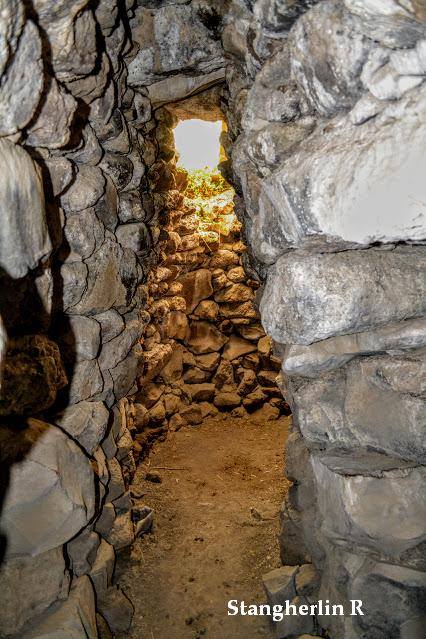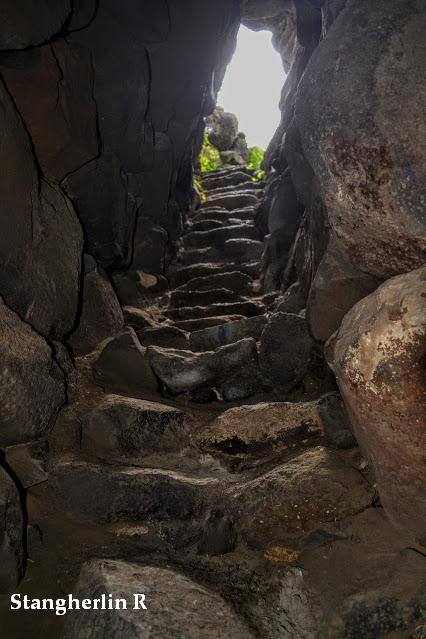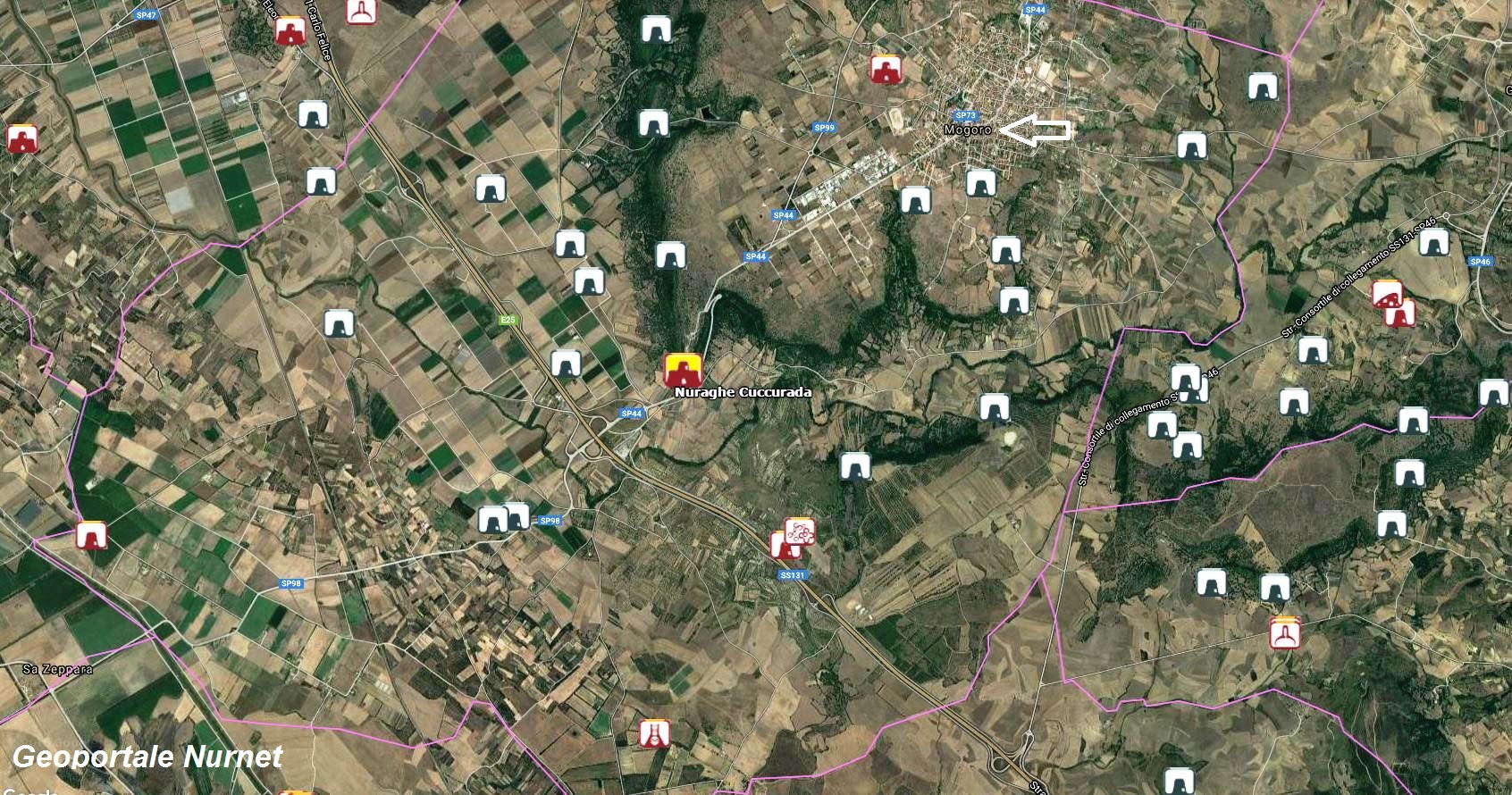The nuraghe Cuccurada in Mogoro is a “polilobato, with four corner towers connected by straight walls that enclose a courtyard where the central tower, called mastio, is also located, and can be dated to the early nuragic period (around 1600 B.C.). However, as discovered during recent excavations, the origin of the settlement is probably to be placed in the pre-nuragic age, by populations that can be classified within the so-called Monte Claro Culture (late 3rd millennium B.C.-early 2nd), as evidenced by the lithic finds in obsidian, the particular ceramics, and the construction of the oldest part of the nuraghe, which is made with large stones that are only slightly shaped, arranged in discontinuous and irregular rows, in a technique that cannot be attributed to the nuragic people. Of the five large towers that make it up, the one located to the southeast is certainly a so-called proto-nuraghe, in fact, the masonry is apparently straight and not tapered towards the top, and it ended with a covering of horizontal stone slabs. Also in the oldest part, there is a large staircase, which probably belonged to a pre-nuragic place of worship, and an ancient wall from the same period. Among the many artifacts found belonging to a time period that ranges from over 2000 B.C. to the paleo-Christian period, some Punic and Roman coins, bone pins, hundreds of goat skulls, Christian lamps, and those with Jewish symbols are noteworthy. Ongoing excavations may shed light on the many mysteries of this prehistoric monument.” (Description taken from the website of the Ministry of Cultural Heritage and Activities and Tourism). The photos of the nuraghe Cuccurada are by Bibi Pinna, Valentino Selis, Andrea Mura- Nuragando Sardegna, Marco Secchi, and Romano Stangherlin.









